Chimpanzee Trekking is one of the most popular tourism activities in Uganda and Rwanda. It comes second only after gorilla trekking in Rwanda. Chimpanzee trekking in both Uganda and Rwanda is done in a few designated areas. These include Nyungwe National Park in Rwanda, Queen Elizabeth National Park, Murchison Falls National Park and Kalinzu Forest in Uganda. Chimpanzee trekking offers Travelers the chance to get close to the primates and spend some quality time with them.
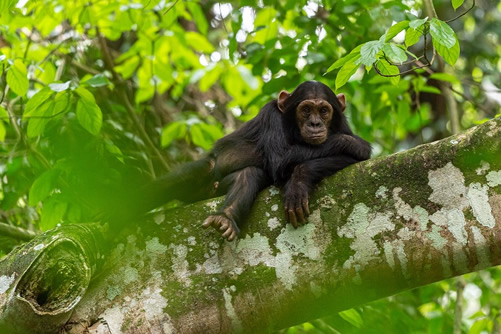 Prior to meeting the chimpanzees, Travelers are required to purchase permits from the tourism offices responsible for issuing them. The government body responsible for issuing our chimpanzee permits in Uganda is the Uganda Wildlife Authority. In Rwanda, chimpanzee permits are issued out by the Rwanda Development Board. Chimpanzee Permits can be acquired through registered Tour Operators in Uganda and Rwanda as we will discuss more later on.
Prior to meeting the chimpanzees, Travelers are required to purchase permits from the tourism offices responsible for issuing them. The government body responsible for issuing our chimpanzee permits in Uganda is the Uganda Wildlife Authority. In Rwanda, chimpanzee permits are issued out by the Rwanda Development Board. Chimpanzee Permits can be acquired through registered Tour Operators in Uganda and Rwanda as we will discuss more later on.
What is a Chimpanzee Permit? A Chimpanzee Permit is a legal document which allows Tourists a chance to visit a community of habituated chimpanzees. Regardless of where one ends up seeing the primates, 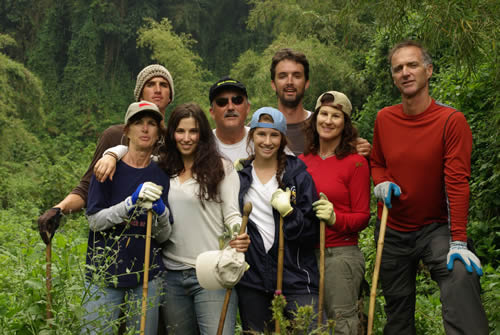 the cost of the permit covers park entrance, spending 1 hour with the chimpanzees upon locating them, a Park Guide and an armed Ranger for security. It is important to note that there are permits for normal chimpanzee trekking and also the chimpanzee habituation experience. The chimpanzee habituation permits allow Tourists more time with the primate and in the company of Researchers. The chimpanzee habituation permit is more expensive but the experience is highly rewarding. In both Uganda and Rwanda, chimpanzee permits are only issued to Travelers who are aged 15 years and above.
the cost of the permit covers park entrance, spending 1 hour with the chimpanzees upon locating them, a Park Guide and an armed Ranger for security. It is important to note that there are permits for normal chimpanzee trekking and also the chimpanzee habituation experience. The chimpanzee habituation permits allow Tourists more time with the primate and in the company of Researchers. The chimpanzee habituation permit is more expensive but the experience is highly rewarding. In both Uganda and Rwanda, chimpanzee permits are only issued to Travelers who are aged 15 years and above.
Cost of Chimpanzee Permits in Uganda
Uganda is blessed to have many chimpanzee trekking sites hence offering Travelers variety. Uganda is also special because it is the only country currently offering tourist the opportunity to take part in the Chimpanzee habituation experience. The cost of chimpanzee permits in Uganda varies depending on the site one is visiting. We will now discuss the cost of chimpanzee permits for the different sites: –
Kibale Forest National Park: This park is found in the Southwestern part of Uganda and is the largest chimpanzee habitat in Uganda covering a total land area of about 795 square kilometers. 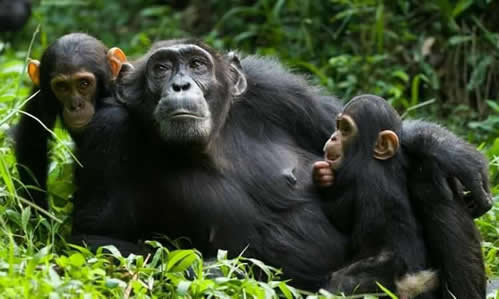 Consisting of evergreen tropical rain-forests, Kibale National Park is home to about 1500 chimpanzee individuals, 12 different monkey species and other species of wildlife. Beginning from July 2024, a chimpanzee permit in Kibale National Park will cost $250 per person for International Tourists. The chimpanzee Habituation Experience permit will cost $300. Foreign resident Travelers will pay $200 for the normal chimpanzee permit and $250 for the chimpanzee habituation experience permits. East Africans will pay 180,000 Uganda Shillings for the chimpanzee permit and 250,000 Uganda shillings for the Chimpanzee Habituation permit in Kibale.
Consisting of evergreen tropical rain-forests, Kibale National Park is home to about 1500 chimpanzee individuals, 12 different monkey species and other species of wildlife. Beginning from July 2024, a chimpanzee permit in Kibale National Park will cost $250 per person for International Tourists. The chimpanzee Habituation Experience permit will cost $300. Foreign resident Travelers will pay $200 for the normal chimpanzee permit and $250 for the chimpanzee habituation experience permits. East Africans will pay 180,000 Uganda Shillings for the chimpanzee permit and 250,000 Uganda shillings for the Chimpanzee Habituation permit in Kibale.
Budongo Forest: Budongo forest is another excellent site to observe wild chimpanzees. The Budongo forest is an extension of the greater Murchison falls national park conservation area. It is one of the largest tropical rain-forests in East Africa covering an area of about 825 square kilometers. About 600 chimpanzees call the forest home and live in 4 chimpanzee communities. One community lives in the Kaniyo Pabidi area and 3 close to the Budongo conservation field station. This field station is body responsible for studying and monitoring the chimpanzee communities in the forest. Travelers can choose to visit any of the four communities of chimpanzees in Budongo at a cost of $130 for foreign nonresidents, $120 for foreign residents and $85 for East African citizens. The management of Chimpanzee Trekking in Budongo has been contracted to an individual.
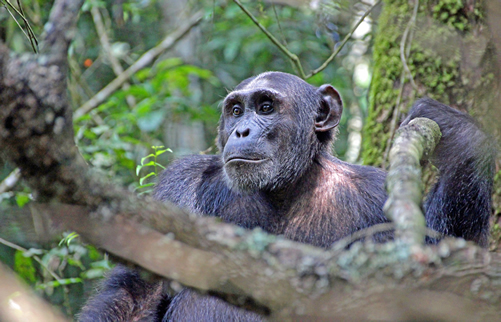 Kyambura and Kalinzu forest: The Kyambura gorge is located within Queen Elizabeth national park while Kalinzu forest is found after the park. Both forests are found in western Uganda and offer excellent opportunities for Chimpanzee tracking. Chimpanzee permits in Kyambura Gorge will cost $100 for international tourists starting from July 2024. Foreign residents in Uganda will pay $80 for the permits while East African Residents will part with 50,000 Uganda shillings. Chimpanzee Trekking permits in Kalinzu forest cost $50 for international tourists and $30,000 for East African Residents. It is important to note that Chimpanzee permits in Kalinzu are issued out by the Uganda Forestry Authority while those in Kyambura Gorge are issued out by the Uganda Wildlife Authority.
Kyambura and Kalinzu forest: The Kyambura gorge is located within Queen Elizabeth national park while Kalinzu forest is found after the park. Both forests are found in western Uganda and offer excellent opportunities for Chimpanzee tracking. Chimpanzee permits in Kyambura Gorge will cost $100 for international tourists starting from July 2024. Foreign residents in Uganda will pay $80 for the permits while East African Residents will part with 50,000 Uganda shillings. Chimpanzee Trekking permits in Kalinzu forest cost $50 for international tourists and $30,000 for East African Residents. It is important to note that Chimpanzee permits in Kalinzu are issued out by the Uganda Forestry Authority while those in Kyambura Gorge are issued out by the Uganda Wildlife Authority.
The price of Chimpanzee Permit in Rwanda
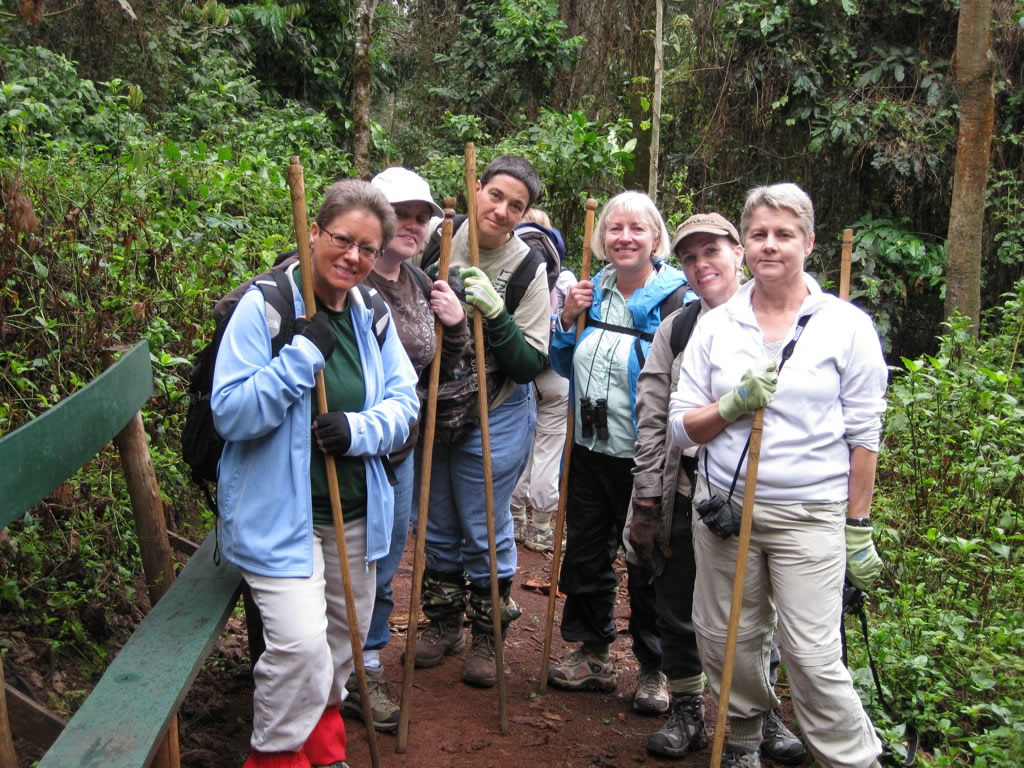 Unlike in Uganda, Chimpanzee trekking in Rwanda is only possible in Nyungwe forest national park. Nyungwe is vast rain forest measuring about 200 square kilometers. It is home to over 500 chimpanzee individuals living in four chimpanzee communities. A chimpanzee permits costs $150 for International Visitors and $75 for foreign residents in the country. East African Citizens pay $25 for the permit. Apart from the permit, International visitors have to pay $100 as park entrance. Foreign residents pay $60 as Park entrance while East African Citizens part with $10 to enter the park.
Unlike in Uganda, Chimpanzee trekking in Rwanda is only possible in Nyungwe forest national park. Nyungwe is vast rain forest measuring about 200 square kilometers. It is home to over 500 chimpanzee individuals living in four chimpanzee communities. A chimpanzee permits costs $150 for International Visitors and $75 for foreign residents in the country. East African Citizens pay $25 for the permit. Apart from the permit, International visitors have to pay $100 as park entrance. Foreign residents pay $60 as Park entrance while East African Citizens part with $10 to enter the park.
How to Book a Chimpanzee Permit
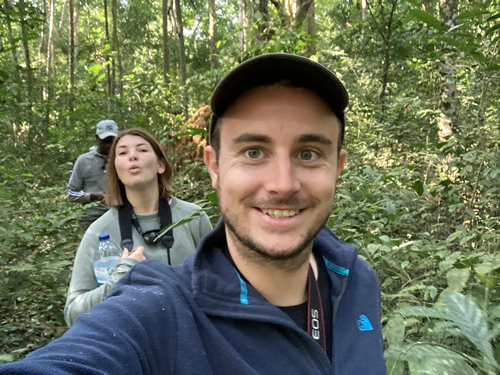 Chimpanzee permits are booked in a similar way in both Uganda and Rwanda. Travelers can opt to book directly through the Uganda Wildlife Authority or the Rwanda Development Board. These are government bodies responsible for tourism affairs in the respective countries. However, it is becoming harder for individuals to book directly with these Authorities. The Authorities may prefer all individual bookings to be done through registered tour operators in Rwanda or Uganda. It is very important that Travelers make their bookings in advance (preferably 6 months ahead) to secure their permits. Chimpanzee permits may be impossible to acquire during the peak season in Rwanda.
Chimpanzee permits are booked in a similar way in both Uganda and Rwanda. Travelers can opt to book directly through the Uganda Wildlife Authority or the Rwanda Development Board. These are government bodies responsible for tourism affairs in the respective countries. However, it is becoming harder for individuals to book directly with these Authorities. The Authorities may prefer all individual bookings to be done through registered tour operators in Rwanda or Uganda. It is very important that Travelers make their bookings in advance (preferably 6 months ahead) to secure their permits. Chimpanzee permits may be impossible to acquire during the peak season in Rwanda.
The best time to see chimpanzees in Uganda and Rwanda
Chimpanzees can be viewed throughout the year in both Rwanda and Uganda. However, the dry season is generally considered to the best time to see chimpanzees. That is because the access routes and trails in the forests are usually dry, accessible and mud free. The vegetation is less dense during the dry season hence allowing tourists to observe the primates better. The chances of seeing chimps are very high because of modern technology, advance teams of trackers and the radio systems used by the park wardens.

